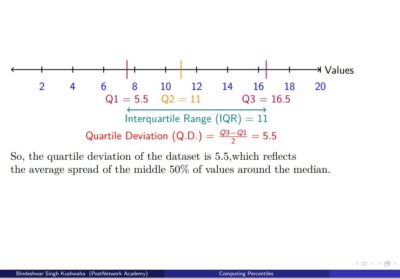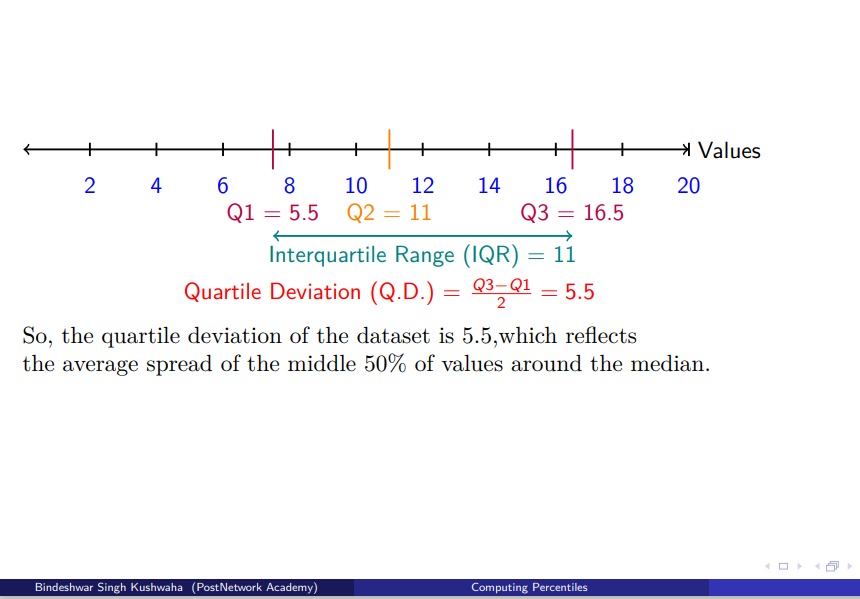Understanding Quartile Deviation: Step-by-Step Calculation & Visualization
Quartile deviation, also known as the semi-interquartile range, is a useful measure in statistics that helps to understand the spread or dispersion of the middle 50% of a dataset. This post explains how to calculate quartile deviation using a sample dataset, and how to visualize it on a number line using LaTeX and TikZ.
Sample Dataset
We’ll use the following dataset for our calculations:
2, 4, 6, 8, 10, 12, 14, 16, 18, 20
Step-by-Step Calculation
Step 1: Find Quartiles \( Q1 \) and \( Q3 \)
For a dataset with n values, quartiles are identified as follows:
First Quartile (Q1)
Q1 is the value at the 25th percentile.
Position of Q1: (n + 1) / 4
With n = 10:
Q1 position = (10 + 1) / 4 = 2.75The 2.75th position falls between the 2nd and 3rd values in our dataset, so we interpolate:
Q1 = 4 + 0.75 * (6 - 4) = 5.5Third Quartile (Q3)
Q3 is the value at the 75th percentile.
Position of Q3: (3 * (n + 1)) / 4
With n = 10:
Q3 position = 3 * (10 + 1) / 4 = 8.25The 8.25th position falls between the 8th and 9th values in our dataset, so we interpolate:
Q3 = 16 + 0.25 * (18 - 16) = 16.5Step 2: Calculate the Interquartile Range (IQR)
The interquartile range (IQR) represents the range of the middle 50% of values:
IQR = Q3 - Q1 = 16.5 - 5.5 = 11Step 3: Calculate the Quartile Deviation (Q.D.)
The quartile deviation (or semi-interquartile range) is half of the IQR:
Q.D. = (Q3 - Q1) / 2 = 11 / 2 = 5.5Summary of Calculations
- Q1 = 5.5
- Q3 = 16.5
- Interquartile Range (IQR) = 11
- Quartile Deviation (Q.D.) = 5.5
So, the quartile deviation of the dataset is 5.5, which reflects the average spread of the middle 50% of values around the median.
quartiledeviation
Video
Conclusion
Quartile deviation offers a concise way to describe the spread of data around the median, focusing on the central 50% of values. Using LaTeX and TikZ, we can visualize this distribution effectively for a better understanding of data dispersion.
Thank you for reading! If you have any questions, feel free to leave a comment below.
